Jiang Du
Weakly Supervised Contrastive Learning for Chest X-Ray Report Generation
Sep 25, 2021



Abstract:Radiology report generation aims at generating descriptive text from radiology images automatically, which may present an opportunity to improve radiology reporting and interpretation. A typical setting consists of training encoder-decoder models on image-report pairs with a cross entropy loss, which struggles to generate informative sentences for clinical diagnoses since normal findings dominate the datasets. To tackle this challenge and encourage more clinically-accurate text outputs, we propose a novel weakly supervised contrastive loss for medical report generation. Experimental results demonstrate that our method benefits from contrasting target reports with incorrect but semantically-close ones. It outperforms previous work on both clinical correctness and text generation metrics for two public benchmarks.
Knee menisci segmentation and relaxometry of 3D ultrashort echo time (UTE) cones MR imaging using attention U-Net with transfer learning
Aug 05, 2019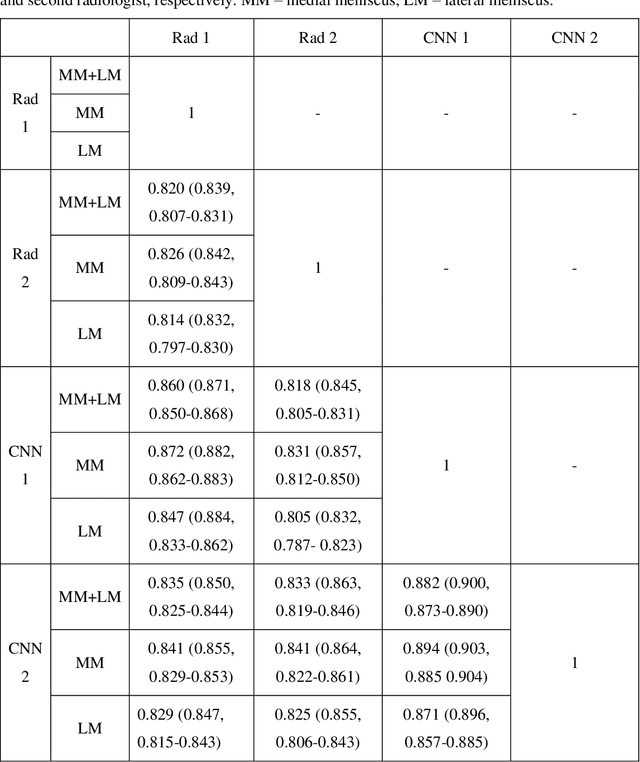

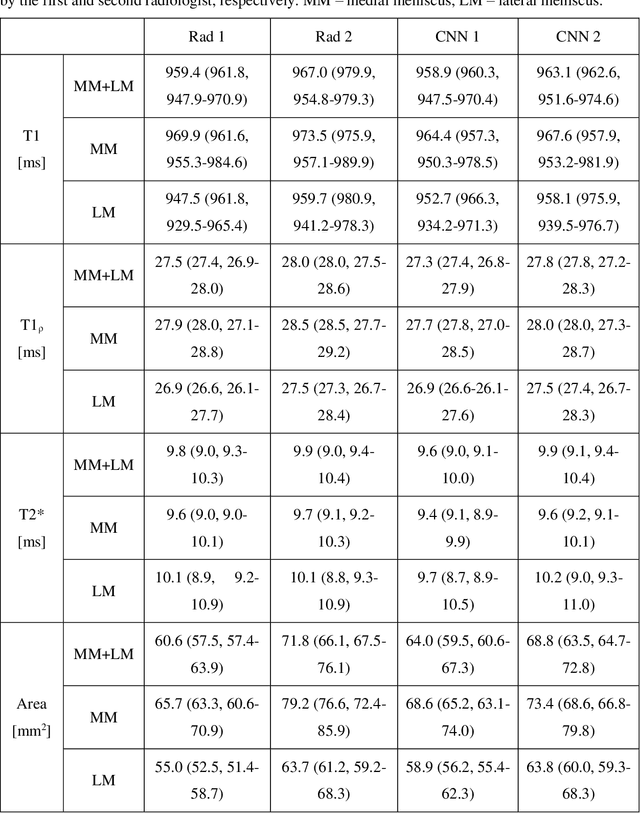
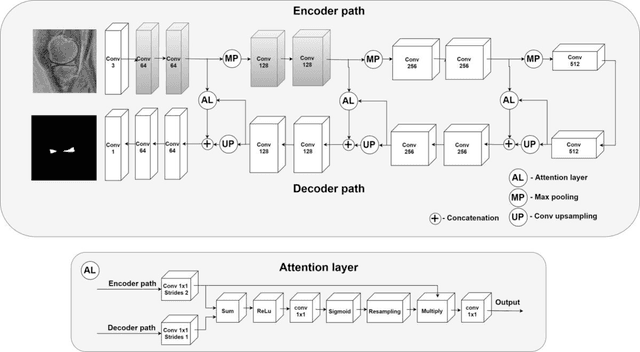
Abstract:The purpose of this work is to develop a deep learning-based method for knee menisci segmentation in 3D ultrashort echo time (UTE) cones magnetic resonance (MR) imaging, and to automatically determine MR relaxation times, namely the T1, T1$\rho$, and T2* parameters, which can be used to assess knee osteoarthritis (OA). Whole knee joint imaging was performed using 3D UTE cones sequences to collect data from 61 human subjects. Regions of interest (ROIs) were outlined by two experienced radiologists based on subtracted T1$\rho$-weighted MR images. Transfer learning was applied to develop 2D attention U-Net convolutional neural networks for the menisci segmentation based on each radiologist's ROIs separately. Dice scores were calculated to assess segmentation performance. Next, the T1, T1$\rho$, T2* relaxations, and ROI areas were determined for the manual and automatic segmentations, then compared.The models developed using ROIs provided by two radiologists achieved high Dice scores of 0.860 and 0.833, while the radiologists' manual segmentations achieved a Dice score of 0.820. Linear correlation coefficients for the T1, T1$\rho$, and T2* relaxations calculated using the automatic and manual segmentations ranged between 0.90 and 0.97, and there were no associated differences between the estimated average meniscal relaxation parameters. The deep learning models achieved segmentation performance equivalent to the inter-observer variability of two radiologists. The proposed deep learning-based approach can be used to efficiently generate automatic segmentations and determine meniscal relaxations times. The method has the potential to help radiologists with the assessment of meniscal diseases, such as OA.
Perceptual Compressive Sensing
Aug 27, 2018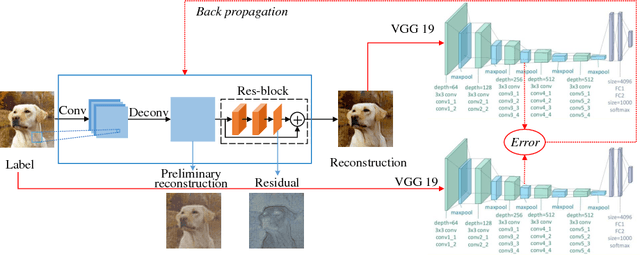
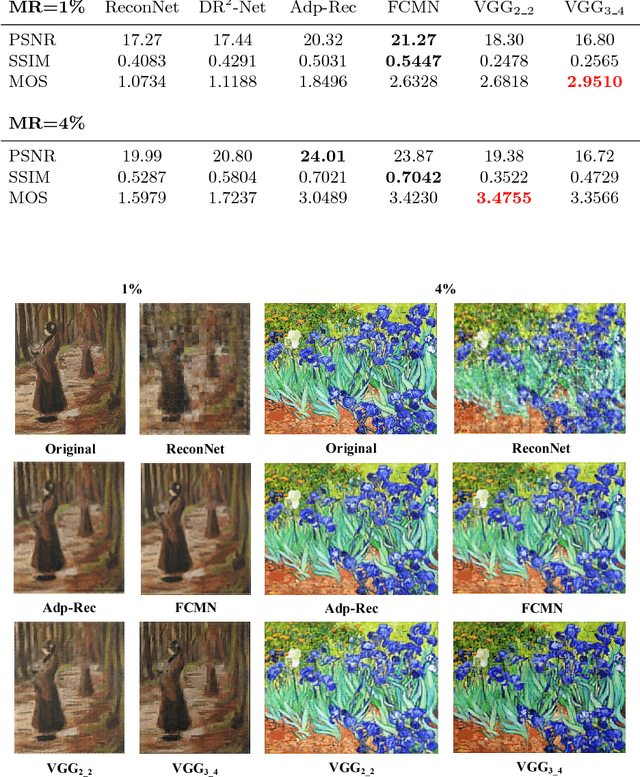

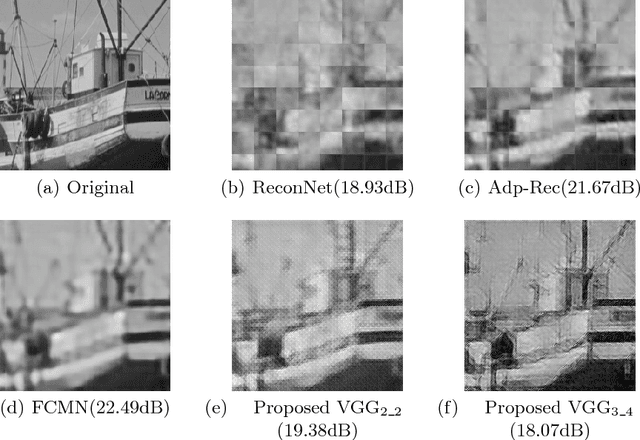
Abstract:Compressive sensing (CS) works to acquire measurements at sub-Nyquist rate and recover the scene images. Existing CS methods always recover the scene images in pixel level. This causes the smoothness of recovered images and lack of structure information, especially at a low measurement rate. To overcome this drawback, in this paper, we propose perceptual CS to obtain high-level structured recovery. Our task no longer focuses on pixel level. Instead, we work to make a better visual effect. In detail, we employ perceptual loss, defined on feature level, to enhance the structure information of the recovered images. Experiments show that our method achieves better visual results with stronger structure information than existing CS methods at the same measurement rate.
Fully Convolutional Measurement Network for Compressive Sensing Image Reconstruction
May 29, 2018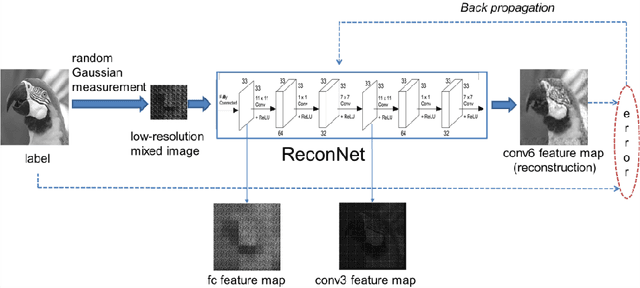
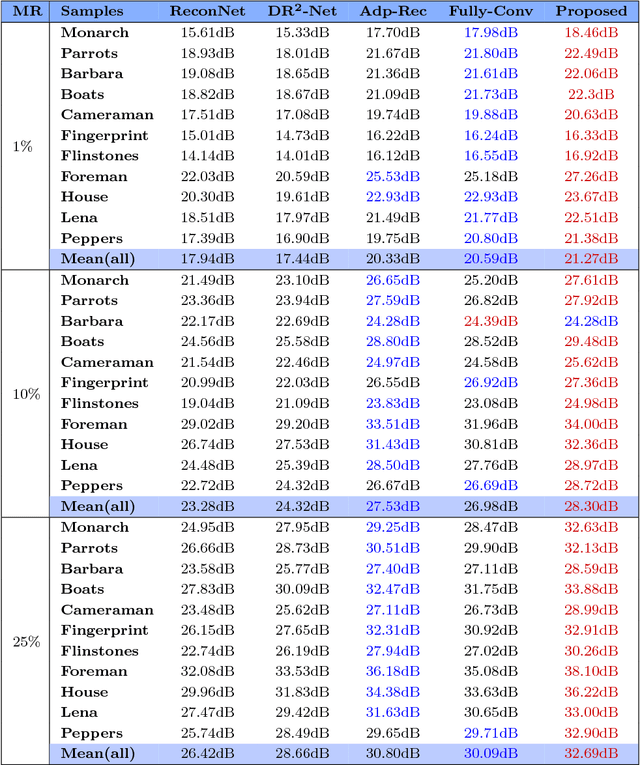
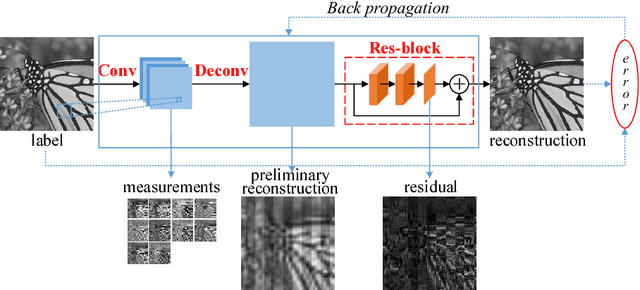
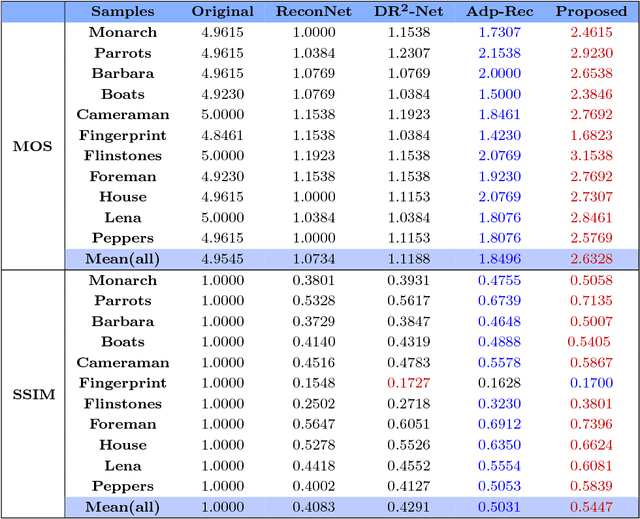
Abstract:Recently, deep learning methods have made a significant improvement in compressive sensing image reconstruction task. In the existing methods, the scene is measured block by block due to the high computational complexity. This results in block-effect of the recovered images. In this paper, we propose a fully convolutional measurement network, where the scene is measured as a whole. The proposed method powerfully removes the block-effect since the structure information of scene images is preserved. To make the measure more flexible, the measurement and the recovery parts are jointly trained. From the experiments, it is shown that the results by the proposed method outperforms those by the existing methods in PSNR, SSIM, and visual effect.
Full Image Recover for Block-Based Compressive Sensing
Feb 01, 2018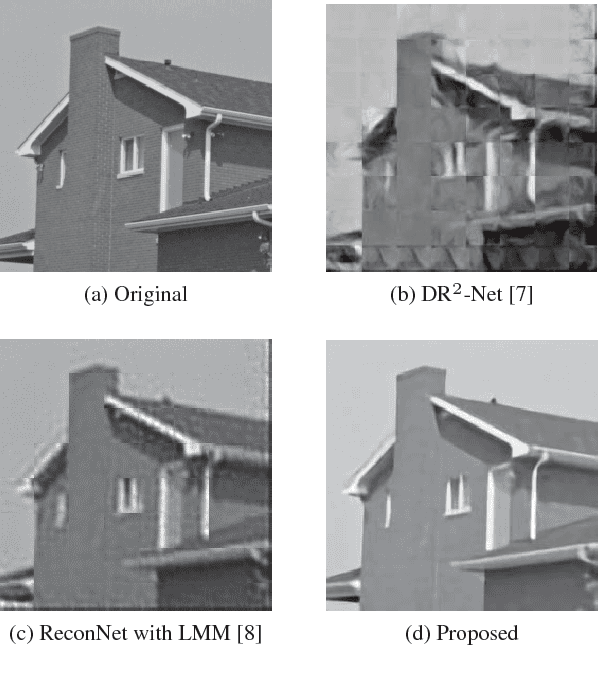
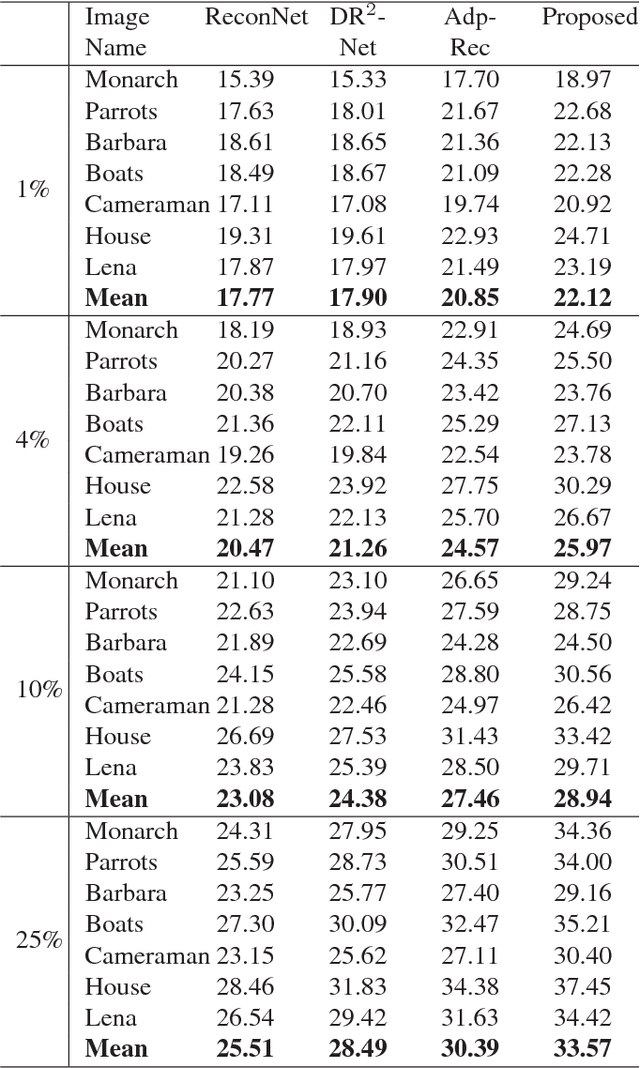
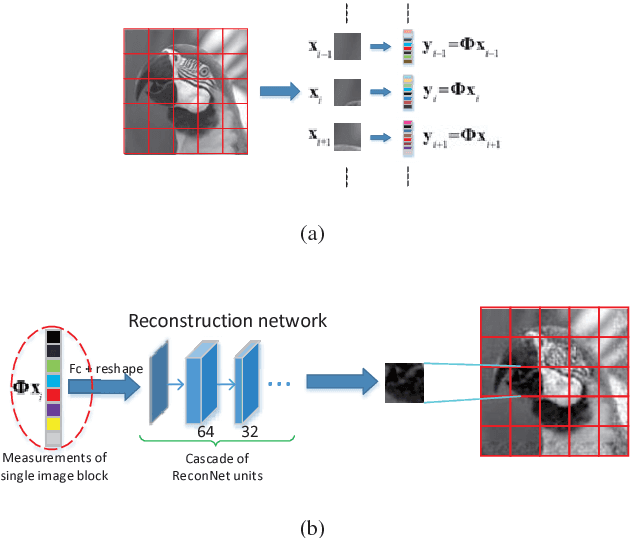

Abstract:Recent years, compressive sensing (CS) has improved greatly for the application of deep learning technology. For convenience, the input image is usually measured and reconstructed block by block. This usually causes block effect in reconstructed images. In this paper, we present a novel CNN-based network to solve this problem. In measurement part, the input image is adaptively measured block by block to acquire a group of measurements. While in reconstruction part, all the measurements from one image are used to reconstruct the full image at the same time. Different from previous method recovering block by block, the structure information destroyed in measurement part is recovered in our framework. Block effect is removed accordingly. We train the proposed framework by mean square error (MSE) loss function. Experiments show that there is no block effect at all in the proposed method. And our results outperform 1.8 dB compared with existing methods.
Adaptive Measurement Network for CS Image Reconstruction
Sep 23, 2017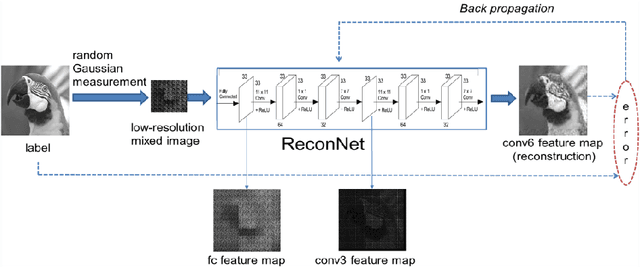
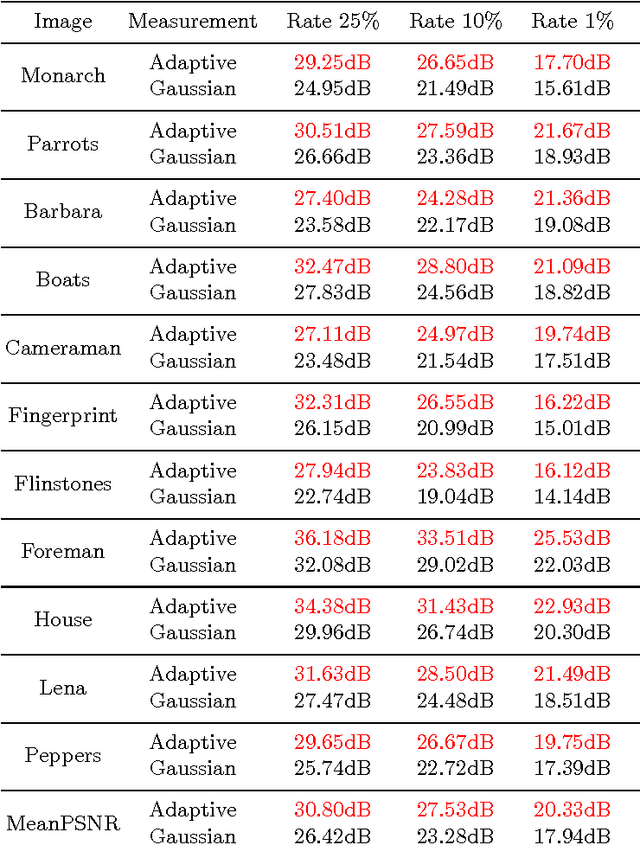
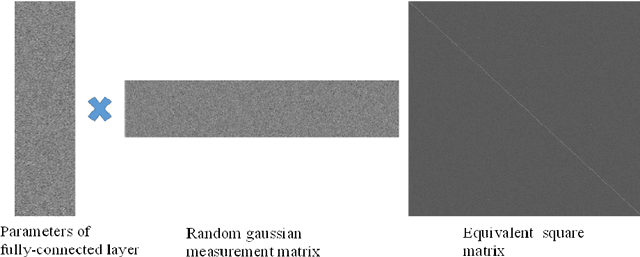
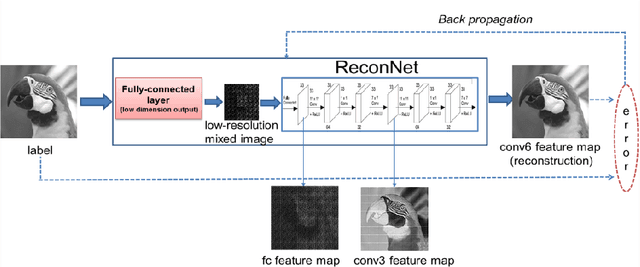
Abstract:Conventional compressive sensing (CS) reconstruction is very slow for its characteristic of solving an optimization problem. Convolu- tional neural network can realize fast processing while achieving compa- rable results. While CS image recovery with high quality not only de- pends on good reconstruction algorithms, but also good measurements. In this paper, we propose an adaptive measurement network in which measurement is obtained by learning. The new network consists of a fully-connected layer and ReconNet. The fully-connected layer which has low-dimension output acts as measurement. We train the fully-connected layer and ReconNet simultaneously and obtain adaptive measurement. Because the adaptive measurement fits dataset better, in contrast with random Gaussian measurement matrix, under the same measuremen- t rate, it can extract the information of scene more efficiently and get better reconstruction results. Experiments show that the new network outperforms the original one.
 Add to Chrome
Add to Chrome Add to Firefox
Add to Firefox Add to Edge
Add to Edge